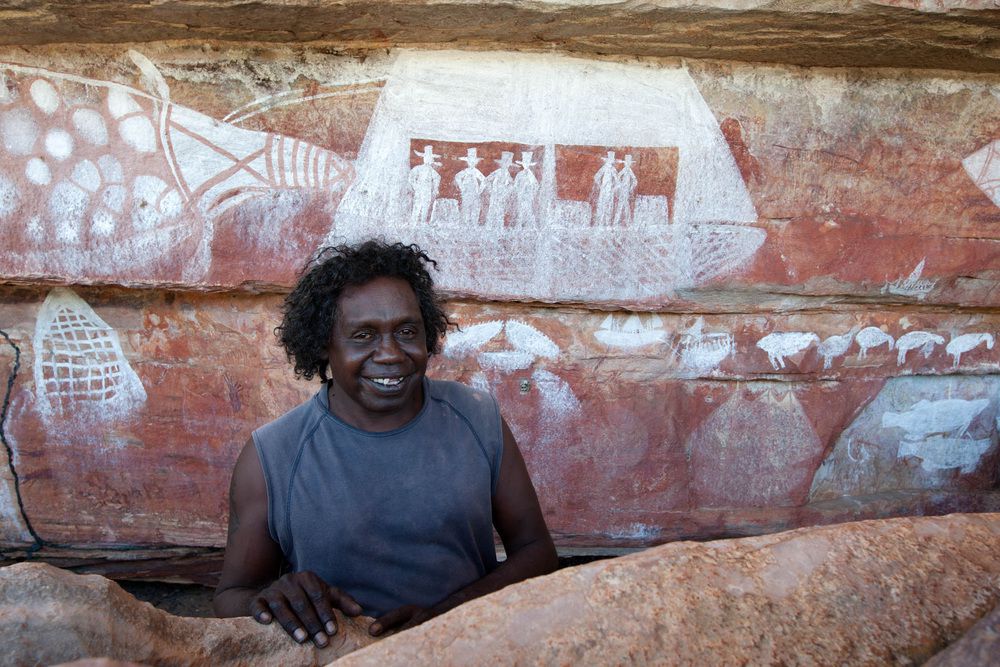History written in stone
 Arnhem Land owner John Reid with 'contact art' showing ships and Europeans. PHOTO COURTESY DAVID HANCOCK/WARDDEKEN LAND MANAGEMENT
Arnhem Land owner John Reid with 'contact art' showing ships and Europeans. PHOTO COURTESY DAVID HANCOCK/WARDDEKEN LAND MANAGEMENT
A SERIES of recent photographs has created an amazing visual archive documenting the arrival of Europeans in Arnhem Land as depicted in rock art from the era.
The photographs are the work of Northern Territory photojournalist David Hancock, who visited sites with elders of the Warddeken Indigenous Protected Area in West Arnhem Land. The project, titled ‘Fragile First Impressions,’ conserves the fragile rock art of the plateau in conjunction with the traditional owners.
The photographs also record the interactions of the Indigenous landowners with the rock art, many of whom are seeing the paintings for the first time. Their ancestors drifted away from the ‘stone country’ in the early 20th century, towards places like Oenpelli and Maningrida. But over the years, the Nawardekken people have started to return to their country and to rediscover these images.
Warddeken Land Management director Terah Guymala says many of the paintings have lain unseen for up to 70 years.
“People painted these pictures to go with stories they were telling … now we have only the pictures— the voices are gone — and understanding the story behind them is a puzzle … like detective work,” Terah said.
The paintings, believed to cover a period from the mid-19th century through to World War II, represent a remarkable archive of indigenous reportage. Aboriginal people travelled to the frontier, where some worked in tin mines and buffalo camps, before coming back to the Arnhem Plateau with stories to tell family.
One painting (above) shows six men in wide-brimmed hats standing on a boat under a sunshade slung between the sails. Along the deck are cargo boxes. The artist recalls in great detail what he has seen: the vessel has an anchor chain and one of the men smokes a pipe.
Another work is believed to show explorer Ludwig Leichhardt passing through the Arnhem Land Plateau in 1845. In some pictures the indigenous visual account lines up perfectly with written European history.
When surveyor David Lindsay and his party crossed the Arnhem Plateau in 1883, Lindsay recorded how they threw away saddle packs, a fishing net, clothes and ammunition to lighten their horses’ load.
A well-preserved art site, found in 2005 about 4km from where Lindsay’s maps show his party rested, includes not only paintings of the party hunting with guns and smoking pipes, but also clear depictions of the saddle packs and fishing net.

